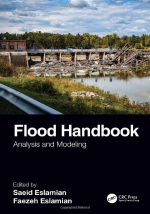Tab Article
Floods are difficult to prevent but can be managed in order to reduce their environmental, social, cultural, and economic impacts. Flooding poses a serious threat to life and property, and therefore it’s very important that flood risks be taken into account during any planning process. This handbook presents different aspects of flooding in the context of a changing climate and across various geographical locations. Written by experts from around the world, it examines flooding in various climates and landscapes, taking into account environmental, ecological, hydrological, and geomorphic factors, and considers urban, agricultural, rangeland, forest, coastal, and desert areas.
Features:
- Presents the main principles and applications of the science of floods, including engineering and technology, natural science, and sociological implications.
- Considers floods in urban, agricultural, rangeland, forest, coastal, and desert areas.
- Covers flood control structures as well as preparedness and response methods.
- Written in a global context, by contributors from around the world.


